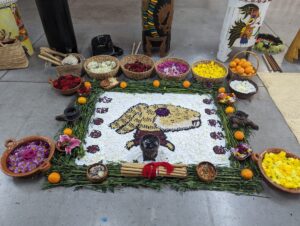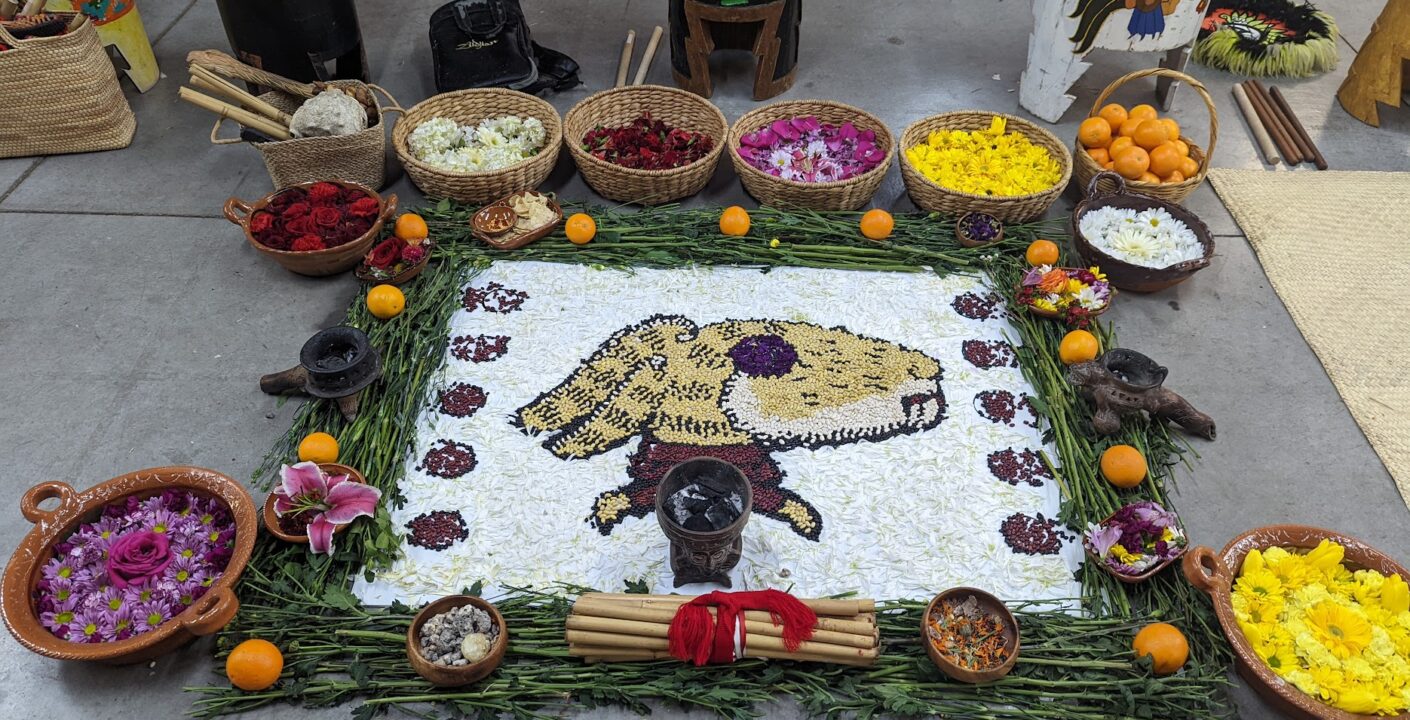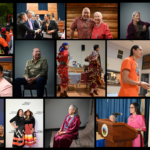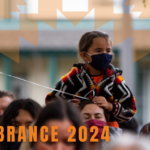 Samuel Torres and Leo Mejia of Kalpulli Yaocenoxtli offer danza in circle in the Matlaktli Tochtli ceremony. Kalpulli Yaocenoxtli is a traditional Mexica kinship community in St. Paul, Minnesota.
Samuel Torres and Leo Mejia of Kalpulli Yaocenoxtli offer danza in circle in the Matlaktli Tochtli ceremony. Kalpulli Yaocenoxtli is a traditional Mexica kinship community in St. Paul, Minnesota.
Marked by the vernal equinox, the first days of spring are upon us. With it brings a sacred ceremonial time for many of us across Turtle Island. For my family and relatives, this is the time of the Mexica new year-Mexica Yankuik Xihuitl (me-SHEE-kah YON-kweek SHE-weet), in our language of Nahuatl (NAH-wat). It is also a time of reflection and ceremony, a cyclic transition that signals a renewal of the ancestral and natural patterns of the universe. As the emergence of spring brings forth a reawakening of the natural cycles from winter’s sleep and dormancy, so does our commitment to renewing and reaffirming ourselves in alignment with these cycles.
In accordance with our traditional ways, of which our people have practiced for thousands of years, we continue to honor and observe this ceremonial time with the sacred knowledge, ceremonies, and rituals that have been passed down for generations. As I wrote last year at this time in our Healing Voices blog, the past year was a time in our ritual calendar that offered us an opportunity to focus on setting our foundations in the year of Chiknahui Kalli (Cheek-NAH-wee KAHL-lee), literally Nine House in Nahuatl. We now transition into Matlaktli Tochtli Xihuitl (mah-TLAHK-tlee TOE’CH-tlee SHE-weet) or the year of ten rabbit, that along with other elements in our ritual calendar, present us with new challenges and opportunities to engage our continued growth and development.

The rabbit embodies the universal and natural qualities of creativity and fecundity and our traditions remind us that having laid the foundations of our work from the previous year, this transition will necessitate a great deal of problem solving and collaboration in order to sustain our direction. Though creativity and problem solving are always important elements of our humanness, this transition into Matlaktli Tochtli Xihuitl offers us timely guidance that these qualities, more so than usual, will be required in the coming year. This is to say then that we should expect serious challenges and obstacles that will test us and require a serious commitment to problem solving and creativity.
For NABS, this is not altogether unanticipated, as we sustain our work with boarding school survivors, descendants, tribal nations, the U.S. federal government, and the general public. As we advocate for a bill for the Truth and Healing Commission on U.S. Indian Boarding School Policies Act (S.2907, H.R.5444), we recognize that the qualities of the rabbit, especially creativity and problem solving, will be critical to advancing the movement for boarding school healing this year. The time for a federal boarding school commission is long overdue. We will continue to fight for truth, justice, and healing. Blessings to you all, ihuan Tlazohkamati miak (and many thanks) for walking with us on this journey. Paki yankuik xihuitl noiknihuan! Happy new year dear relatives!

Deputy Chief Executive Officer
Pronunciation Guide:
Mexica: meh-SHE-kah
Nahuatl: NAH-wat
Yankuik Xihuitl: YON-kweek SHE-hweet
Chiknahui Kalli: cheek-NA-hwee KAH-lee
Matlaktli Tochtli: mah-TLAHK-tlee TOE’CH-tlee
Kalpulli Yaocenoxtli: Kal-PULL-ee yow-se-NO-shtlee









